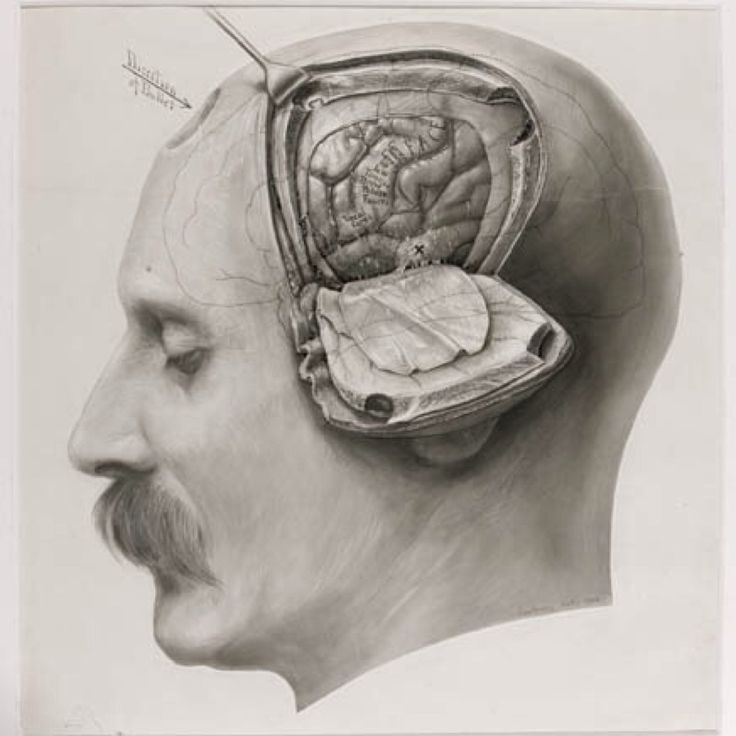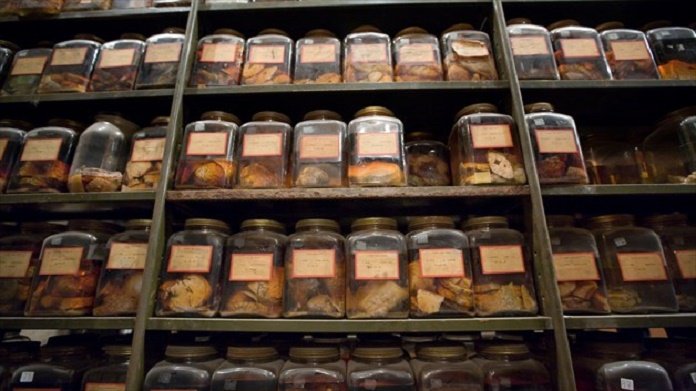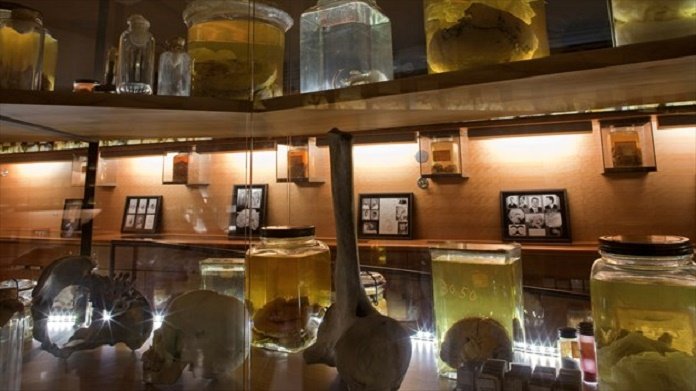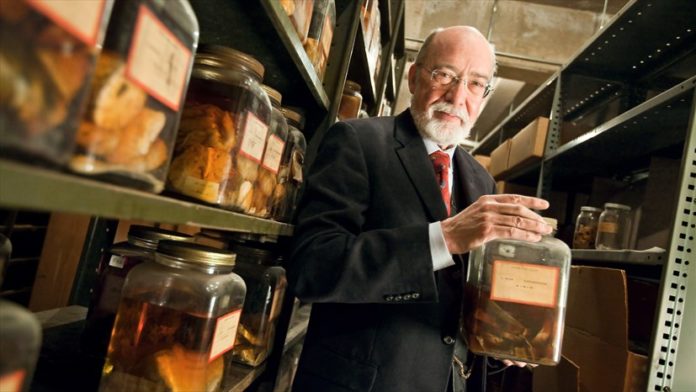While visiting a room at the Yale School of Medicine, Maya Lodish, MD, and her five-year-old daughter stunned after looking many of jars. The jars consist of brains collected by Yale’s Harvey Cushing, the father of neurosurgery. Now, his collection, that suggests secrets of brain science, will be used for research purpose.
Inside the jars, there was a clear liquid that illuminated by yellow light. Along with that, there was a photograph of surgeries. The photos, are like, the back of a man’s head sewn up like a seam in a pair of trousers, a boy with protrusions from his skull that looked like rolling mounds of earth.
The vast collection was originally assembled in the early 1900s by Dr. Harvey Cushing. These brains had belonged to patients who had some of the country’s very first brain surgeries.
After discussion with Cushing Center coördinator Terry Dagradi, Dr. Lodish thought, if these could be used to answer questions which mainly focuses on the genetics behind pituitary tumors in children.

One such area involves Cushing’s disease, a condition where a noncancerous tumor called an adenoma grows inside the pituitary gland, just below the base of the brain. The disease generally releases stress hormone cortisol. Thus, it causes weight gain, poor growth, high blood pressure, and diabetes.
Dr. Lodish also studies growth hormone excess. This hormonal imbalance leads to gigantism or abnormal growth. On the other hand, this hormone excess lead to a condition called acromegaly in adults. In acromegaly, person’s bones stats increase in size.
Genetics is considered key to finding cures and advancing treatments for life-threatening conditions. Dr. Cushing operated on patients who had genetic conditions through a much more rudimentary process.
Dennis Spencer MD, chair of the Department of Neurosurgery said, “Cushing was an immense figure for neurosurgery. He essentially founded the field, and he changed the mortality rate of brain surgeries from 80 percent to eight percent over the course of his career.”

During his working days, he collected meticulous notes about his patients and took their photos. He kept each tissue example he removed during operations for further study.
In 1933, while returning to Yale as professor of neurology, he brought his massive collection of tissues, photographs, microscopic slides, notes, and a trove of rare books. Neurosurgeons and pathologists came across the country to visit the collection.
After the decade, the collection was seen as outdated. It was moved to the sub-basement of a student dormitory, where the specimens went unseen.
Later on, in the early of 1990’s medical student Christopher Wall approached Dr. Spencer for the thesis on collection. And they started preparing it for public display once again.

After the discussion, Dr. Lodish analyzed the brains for the first time. Believing it has both historical and scientific value, he suggests, “It gives us a chance to look at the evolution of genetic control of a particular disease.”
They primarily tapped the massive database and determined which samples came from patients with pituitary tumors secreting excess hormones. They narrowed the field down to 25 brains of interest. To extract the collection of the brain tissues, scientists turned to the laboratory of the section on endocrinology and genetics at the NIH.
There they took almost 500 milligrams of tissue from each sample and sequenced and analyzed the DNA from 12 of the specimens.
Cynthia Tsay, a medical student said, “Working with Dr. Spencer was incredible. He played such an instrumental role in the restoration of the brains and was so knowledgeable about the collection.”
Tsay is now working with NIH’s mentor to sequence and studying the genes.
Dr. Spencer said, “Other uses of these samples will probably emerge. Further study is still required, because the field of genetics is evolving so rapidly, and they’re such well-preserved tumors.”
